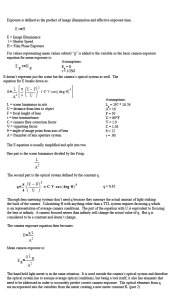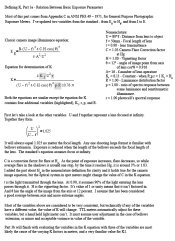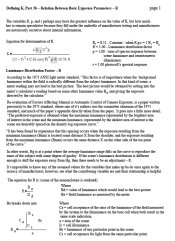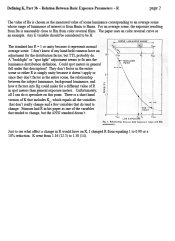Rich Ullsmith
Member
- Joined
- Jan 26, 2007
- Messages
- 1,159
- Format
- Medium Format
Actually, I am interested in it so far as it pertains to my G2.
Reading up on my camera today, I learned (per "service manual") that the K factor for the Contax G2 metering system is 1.3.
I researched "K factor" and ran into all sorts of the type of mathematics I spent my youth avoiding.
From my reading, I reached the unsteady conclusion that the meter in my Contax registers 1/3 stop brighter than the scene really is. (Assuming an 18% gray, 45 degree light, etc.)
Is my understanding of this correct? Should I have the exposure compensation dial at -1/3, or do I have this backwards? Please advise. Thanks for the help up front, and I will check back in the a.m. Rich.
Reading up on my camera today, I learned (per "service manual") that the K factor for the Contax G2 metering system is 1.3.
I researched "K factor" and ran into all sorts of the type of mathematics I spent my youth avoiding.
From my reading, I reached the unsteady conclusion that the meter in my Contax registers 1/3 stop brighter than the scene really is. (Assuming an 18% gray, 45 degree light, etc.)
Is my understanding of this correct? Should I have the exposure compensation dial at -1/3, or do I have this backwards? Please advise. Thanks for the help up front, and I will check back in the a.m. Rich.










